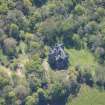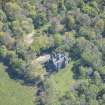Kilberry Castle, Chapel
Burial Ground (Medieval), Gravestone(S) (Medieval), Parish Church (Medieval)
Site Name Kilberry Castle, Chapel
Classification Burial Ground (Medieval), Gravestone(S) (Medieval), Parish Church (Medieval)
Alternative Name(s) St Berchan's Chapel; Saint Berry's
Canmore ID 38993
Site Number NR76SW 15
NGR NR 7085 6414
NGR Description NR c. 7085 6414
Datum OSGB36 - NGR
Permalink http://canmore.org.uk/site/38993
- Council Argyll And Bute
- Parish South Knapdale
- Former Region Strathclyde
- Former District Argyll And Bute
- Former County Argyll
Field Visit (27 June 1973)
There are no visible remains of the chapel or burial ground. Miss Campbell (of Kilberry) suggested, however, that the mausoleum at NR 7082 6413 probably stands on the site of the chapel, and that the burial ground was centred at NR 7085 6414. She is also of the opinion that the chapel was dedicated to St Berchan. Twenty-four sculptured grave stones are housed in the DoE [Dep. of the Env.] shelter at NR 7099 6425.
Surveyed at 1:2500.
Visited by OS (IA) 27 June 1973.
Desk Based Assessment (1973)
NR76SW 15.00 c. 7085 6414
(Name: NR 7075 6420) Site of (NAT) St Berry's Chapel & Burial Ground (NR)
OS 6" map, Argyllshire, 2nd ed., (1900)
NR76SW 15.01 NR 70859 64130 Mausoleum
For medieval graveslab found at Port Ban, Coulaghailtro (NR 7068 6549) and possibly from this churchyard, see NR76NW 15.
Recent excavations reveal walls and a line of graves - covers removed, with one exception - between the cross (at NR 7085 6412 - NR76SW 3) and the family mausoleum, which was built in 1735 and may mark the site of the church. Several of the stones now in the DoE shelter were built into the wall of the mausoleum, and may belong to the graves just mentioned, perhaps uncovered when levelling the ground for the tomb. Most of the stones in the DoE shelter were recovered from walls or hearths by former lairds; some were found in a bridge to the gardens. There are a few early stones among the many medieval ones.
The graveyard, abandoned in the 18th c, when Cladh Dailachairn (NR76SW 7) was used, extended NW of the cross towards the access drive. Bones can be found anywhere along the bank and at the edge of the wood.
The bank between the house and the cross-base covers building rubble. There is a strong local tradition of a 'monastery' here, and 'an old building where the monks ate, with stone seats in it' was remembered as standing E of the castle, by an old man in 1913. This was blown up in 1849 for use as building material. No documentary evidence of a monastery has been found; a 'paroch church' is recorded c. 1620-60. The dedication is to either St (Fin)bar (578) or St Berchan (546). Local pronunciation, Cille-Bhairre, supports the former; a reference in literature to 'St Ferchanus in Knapdale' suggests the latter (see also NR76SW 15.1).
M Campbell and M Sandeman 1964.
Information from OS.
Field Visit (October 1988)
The slight remains of the medieval parish church of Kilberry are situated in wooded ground about 40m E of Kilberry Castle (No. 133) and 3.8km WNW of the present church at Largnahunsion (No. 49). Some 12m W of the Campbell mausoleum of 1733 (infra) there is the SW angle of a rectangular building, represented by a rubble footing 0.9mthick above a 0.l5m base-course, extending E for 3m and N for 1.6m from the angle. The outer face of its S wall is aligned with the N wall of the mausoleum, suggesting that this may occupy the position of an earlier chapel lying S of the medieval chancel. Fragments of dressed sandstone have been identified on the site but the only identifiable architectural fragment, part of a nook-shaft of possible 13th-century date (infra), was found in 1976 in a fish-pond some distance to the S. A medieval cross in its original base (infra, number 14),which is known to have been moved in the 19th century, now stands a few metres S of the footings, and to the N there is a former bowling-green which is believed to occupy the site of the burial-ground (en.1).
This church is believed to have been dedicated to St Berach of Cluain-coirpthe (Kilbarry, Co. Roscommon), although late medieval forms suggest that another Irish saint, Berchan, who is commemorated at Kilbarchan (Renfrewshire), is a more probable dedicatee (en.2*). The church became a prebend of the cathedral of Argyll on Lismore shortly before 1392, and later parsons are recorded as being admitted to the prebend, one of them being Angus, bishop of the Isles, who in 1472petitioned to have a house at Kilberry, while the names of several vicars are also recorded from 1436 onwards (en.3). It was stated in 1392 that the parson had been presented by 'the king of Scots, the true patron', but in 1492 it was John, Lord of the Isles, with the consent of Thomas Fleming, parson, who transferred his right of patronage to the bishop of Argyll. This, however, was one of John's last acts before his forfeiture, and although the charter was confirmed by James IV in 1507, the patronage had already been granted by him to the 2nd Earl of Argyll, with whose heirs it remained (en.4).
The medieval parish included the area N of West Loch Tarbert, but extended N along the Sound of Jura only as far as .Kilmaluaig (No. 66), and at about the time of the Reformation it was united with Kilcalmonell on the SE shore of West Loch Tarbert, where the minister normally resided. In 1642 a further 8km of the E shore of Loch Caolisport, extending to the Baranlongart Burn, was transferred from Knapdale to Kilberry, but the proposed separation of the parish from Kilcalmonell, and the construction of a new church at Tarbert, did not take effect (en.5). In the following century it was stated by Colin Campbell of Kilberry that the church was 'burnt by the Garrison of this castle during the Civill War, to prevent it's covering any of the Royal army which then invested the Place', probably a reference to a siege by Alasdair MacDomild in the 1640s. A meeting-house was then built 'at a more convenient distance from the castle', and replaced in the early 18th century by a house at Tiretigan, following which there were repeated arguments about the location of a new church before the present building at Largnahunsion (No. 49) was erected in 1821 (en.6).
A new burial-ground was established at Largnahunsion (No. 92) in the early 18th century, but the old burial-ground appears to have remained in use, with the addition of the 1733mausoleum, until the 1760s, when it was closed by Colin Campbell of Kilberry. Following a court action, he agreed in 1768 to move to a new burial-ground at Keppoch (No. 46) 'the grave stones of the old burial place or as many as can be found there or in any other place whither he has already moved them', and he undertook 'not to plough up the old burying ground near the Castle of Kilberry, but leave the same for ever in grass and verdure' (en.7). The new burial-ground was close to prehistoric cairns and burials, and about 0.75kmSSW of Keppoch (NR c. 710628) there was a field named' Annaid', indicating a possible Early Christian ecclesiastical site (en.8*).
ARCHITECTURAL FRAGMENT. This fragment, found in 1976 (supra) and now at Kilberry Castle, is the lower part of a sandstone nook-shaft, 0.11m high above a 12mm tenon70mm in diameter intended to fit a socketed base. The shaft was O.l2mm in diameter and was pointed at the back to fit into a square angle.
BELL. The bell hanging above the N gable of the W range of the home farm (NR 709643) is 0.28m in visible height, the canons being concealed by the supporting bar, and 0.34m in diameter at the mouth. It is plain except for a 25mm moulded band 50mm above the mouth, and appears to be of late 18th or 19th-century date. It was evidently the bell seen at Kilberry Castle in 1868 and then known as 'St Berry's Bell', although earlier descriptions refer to the saint's bell as bearing a votive inscription.
RCAHMS 1992, visited October 1988
[see RCAHMS 1992, No. 47, for a description of funerary monuments, crosses and other carved stones]













![Kilberry. Medieval grave slab showing knight [No. 11] and post medieval panel showing a cockerel [No. 27]](http://i.rcahms.gov.uk/canmore/l/SC01433199.jpg)







![Kilberry, Medieval and post medieval carved stones [Nos. 4, 22, 27]](http://i.rcahms.gov.uk/canmore/l/SC01433198.jpg)
![Kilberry. Medieval graveslab [No. 12]](http://i.rcahms.gov.uk/canmore/l/SC01433202.jpg)




![Kilberry. Front of standing cross [Nos. 14, 18]. NB This cross is set in a base bearing one or more incised circles with radial lines and central pit, also a shallow cup-mark closed by a plug which fits it exactly (4.5 x 5"). Cross-base at Kilmory Knap is the same.](http://i.rcahms.gov.uk/canmore/l/SC01433200.jpg)











![Kilberry Castle. Back of standing cross [Nos. 14, 18]. NB This cross is set in a base bearing one or more incised circles with radial lines and central pit, also a shallow cup-mark closed by a plug which fits it exactly (4.5 x 5"). Cross-base at Kilmory Knap is the same.](http://i.rcahms.gov.uk/canmore/l/SC01433201.jpg)
![Kilberry Castle. Medieval and post-medieval carved stones at burying-place [Nos. 28, 23, 6]](http://i.rcahms.gov.uk/canmore/l/SC01433203.jpg)











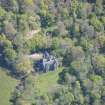

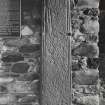




![Kilberry. Medieval grave slab showing knight [No. 11] and post medieval panel showing a cockerel [No. 27]](http://i.rcahms.gov.uk/canmore/s/SC01433199.jpg)







![Kilberry, Medieval and post medieval carved stones [Nos. 4, 22, 27]](http://i.rcahms.gov.uk/canmore/s/SC01433198.jpg)
![Kilberry. Medieval graveslab [No. 12]](http://i.rcahms.gov.uk/canmore/s/SC01433202.jpg)

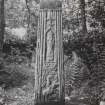


![Kilberry. Front of standing cross [Nos. 14, 18]. NB This cross is set in a base bearing one or more incised circles with radial lines and central pit, also a shallow cup-mark closed by a plug which fits it exactly (4.5 x 5"). Cross-base at Kilmory Knap is the same.](http://i.rcahms.gov.uk/canmore/s/SC01433200.jpg)
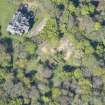
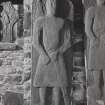

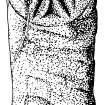
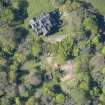

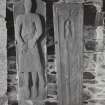




![Kilberry Castle. Back of standing cross [Nos. 14, 18]. NB This cross is set in a base bearing one or more incised circles with radial lines and central pit, also a shallow cup-mark closed by a plug which fits it exactly (4.5 x 5"). Cross-base at Kilmory Knap is the same.](http://i.rcahms.gov.uk/canmore/s/SC01433201.jpg)
![Kilberry Castle. Medieval and post-medieval carved stones at burying-place [Nos. 28, 23, 6]](http://i.rcahms.gov.uk/canmore/s/SC01433203.jpg)
